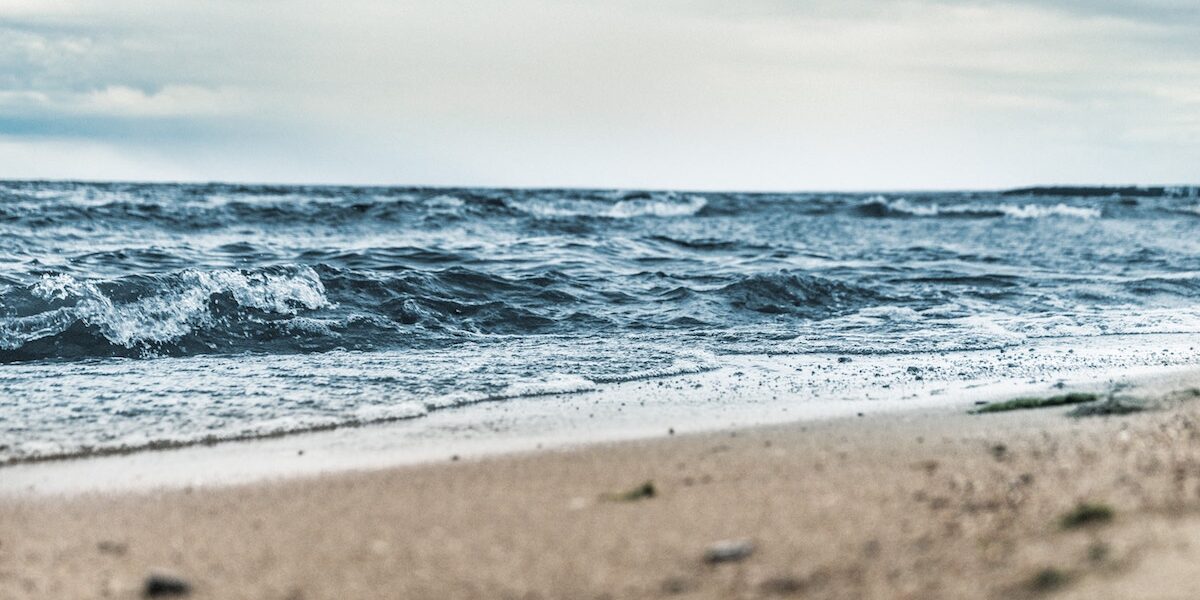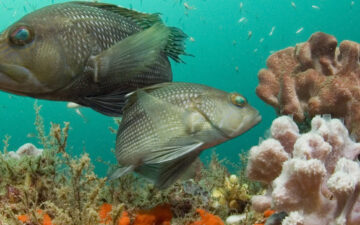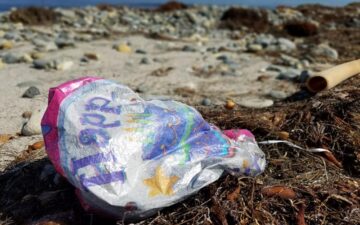The Colorful Blur of October
Part 3: An Island, the Ocean and Managing the Future
by Mark J. Spalding
As I wrote before, fall is a busy season for conferences and other gatherings. During the six week trip, I was lucky enough to spend a few days on Block Island, Rhode Island, checking out the wind farm underway, learning more about the efforts to protect such infrastructure as the Waste Transfer Station, post Hurricane Sandy and other storm-caused erosion, and enjoying the diverse areas of the island that have been protected from development and offer delightful hikes.
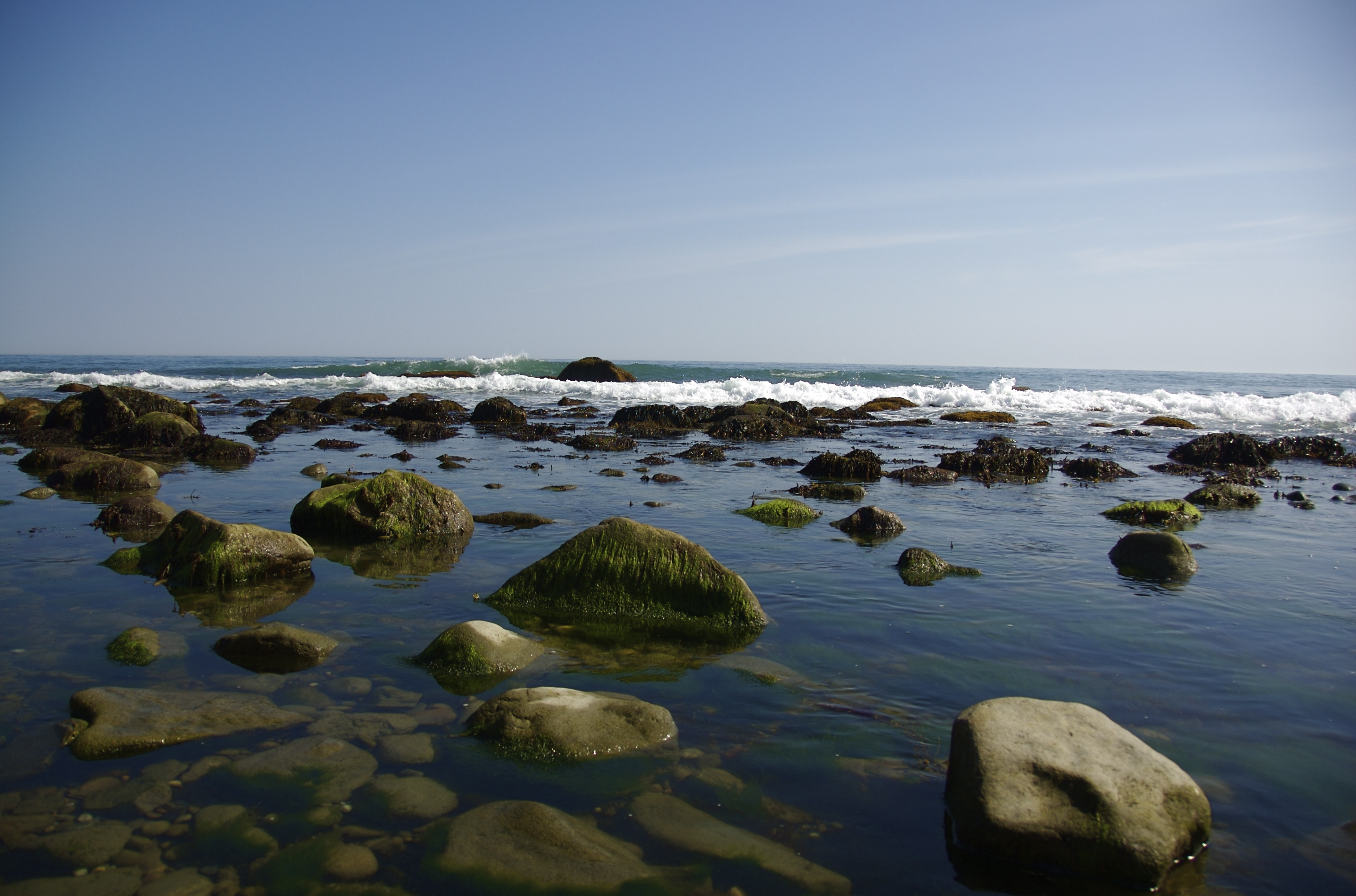 Block Island was formally settled by Europeans in 1661. Within 60 years, most of its forests had been felled for construction and fuel. The abundant rounded glacial rocks were used for stone walls—which stand protected today. The open fields provided an open habitat that supported certain species such as larks. The island lacked a natural harbor to protect larger boats, but had an inshore cod fishery and abundant shellfish. Following the construction of a harbor breakwater (Old Harbor) in the late 19th century, Block Island blossomed as a summer destination, boasting grand old waterfront hotels. The island is still a very popular summer destination, and offers visitors hiking, fishing, surfing, bike riding, and beach combing, among its other attractions. Forty percent of the island is protected from development, and most of the natural areas are open to the public. The year-round population is now just about 950 people.
Block Island was formally settled by Europeans in 1661. Within 60 years, most of its forests had been felled for construction and fuel. The abundant rounded glacial rocks were used for stone walls—which stand protected today. The open fields provided an open habitat that supported certain species such as larks. The island lacked a natural harbor to protect larger boats, but had an inshore cod fishery and abundant shellfish. Following the construction of a harbor breakwater (Old Harbor) in the late 19th century, Block Island blossomed as a summer destination, boasting grand old waterfront hotels. The island is still a very popular summer destination, and offers visitors hiking, fishing, surfing, bike riding, and beach combing, among its other attractions. Forty percent of the island is protected from development, and most of the natural areas are open to the public. The year-round population is now just about 950 people.
Thanks to our hostesses, Ocean View Foundation’s Kim Gaffett and the Rhode Island Natural History Survey’s Kira Stillwell, I was able to learn more about the island’s unique resources. Today the fields are giving way more and more to coastal scrub and denser habitats, changing the mix of resident and migratory birds. The island’s abundant berry producing natives such as winterberry, pokeberry, and wax myrtle, are being challenged by Japanese knotweed, Black Swallow-wort, and mile-a-minute vines (from East Asia).
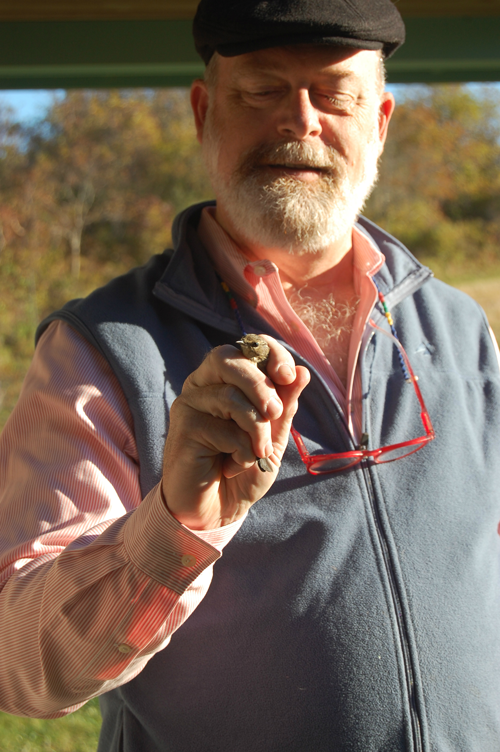 In the fall, countless numbers of migrating birds stop at Block Island to rest and refuel before continuing their journeys to distant southern latitudes. Often times, their destinations are thousands of miles away in Central and South America. For the past fifty years, one family has hosted a banding station near the north end of Block Island, not far from the Clayhead Bluffs that make for a dramatic landmark on the ferry ride from Point Judith. Here, migrating birds are caught in mist nets, gently removed less than an hour later, weighed, measured, banded, and released again. Block Island native and bird banding expert, Kim Gaffett has spent decades at the station in the spring and the fall. Each bird receives a band that is designed for their size and weight, its sex is determined, its fat content determined, its wing length measured from the “elbow,” and weighed. Kim also checks the fusion of the skull to determine the age of the bird. Her volunteer helper Maggie carefully notes the data on each bird. The gently handled birds are then released.
In the fall, countless numbers of migrating birds stop at Block Island to rest and refuel before continuing their journeys to distant southern latitudes. Often times, their destinations are thousands of miles away in Central and South America. For the past fifty years, one family has hosted a banding station near the north end of Block Island, not far from the Clayhead Bluffs that make for a dramatic landmark on the ferry ride from Point Judith. Here, migrating birds are caught in mist nets, gently removed less than an hour later, weighed, measured, banded, and released again. Block Island native and bird banding expert, Kim Gaffett has spent decades at the station in the spring and the fall. Each bird receives a band that is designed for their size and weight, its sex is determined, its fat content determined, its wing length measured from the “elbow,” and weighed. Kim also checks the fusion of the skull to determine the age of the bird. Her volunteer helper Maggie carefully notes the data on each bird. The gently handled birds are then released.
I didn’t see how I could be useful banding, or measuring, or weighing. I certainly lacked Kim’s experience in determining the fat level, for example. But it turned out, I was very happy to be the man who helped the little birds speed back on their way. Every so often, as in the case of one young vireo, the bird would sit calmly for a moment on my finger, looking around, and maybe judging the windspeed, before it would fly off—landing deep in the scrub almost too fast for our eyes to follow.
Like so many coastal communities, Block Island’s infrastructure is at risk from rising seas and natural erosion. As an island, retreat is not an option, and alternatives must be found for everything from waste management, to road design, to energy. Kim and other members of the community have helped spearhead the drive to boost the island’s energy independence—with the first US offshore wind farm now under construction off the island’s east side.
The work Kim and her band of volunteers do to count the migrant birds, just like the work of the Biodiversity Research Institute raptor team will help us understand more about the relationship between those turbines and bird migrations. Many communities will benefit from the lessons learned from the process that the Block Island community is developing as it navigates everything from where power comes ashore, to where the wind farm’s workboats dock, to where the generating substation will be built. Our colleagues at the Island Institute in Maine are among those who have shared in, and helped inform, the process.
The Ocean Foundation was founded, in part, to help bridge resource gaps in ocean conservation—from knowledge to finance to human capacity—and the time in Block Island reminded us that our relationship to the sea begins at the most local level. To stand and look out at the Atlantic, or south to Montauk, or back across to the Rhode Island coastline is to know you’re in a very special place. For my part, I know I am incredibly lucky and incredibly grateful to have learned so much in such a short time on such a beautiful island.
Photo 1: Block Island, Photo 2: Mark J. Spalding assisting with the release of local birds
